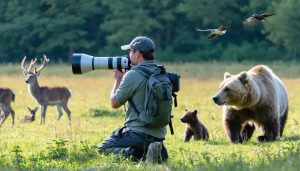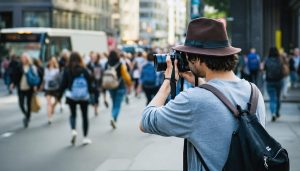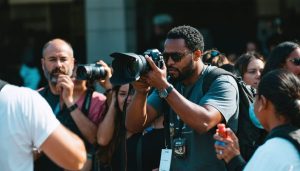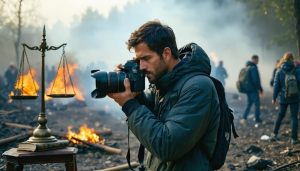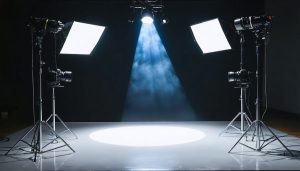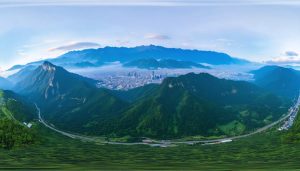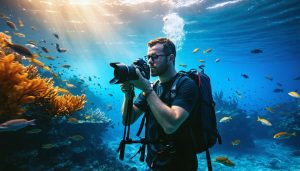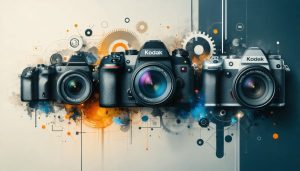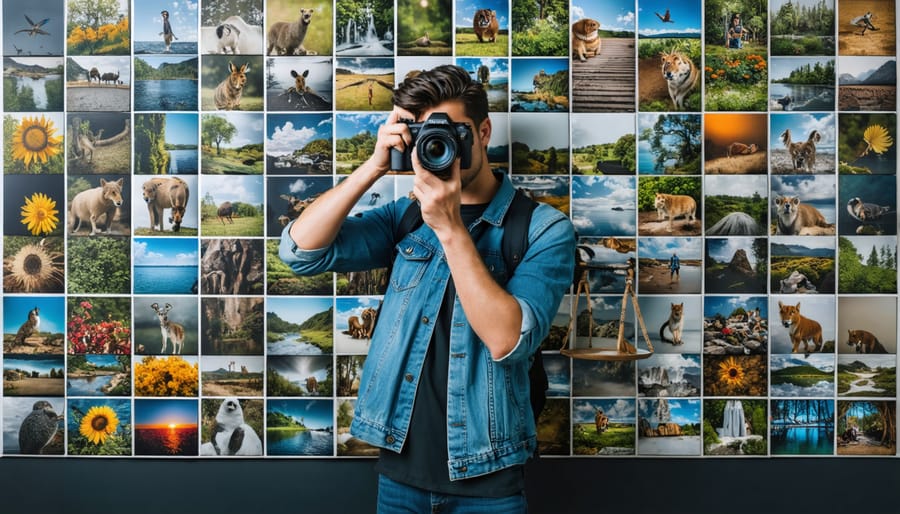
Photography wields immense power to shape narratives, influence perspectives, and impact lives – a power that comes with profound ethical responsibilities. Every time we press the shutter, we make decisions that affect not just our art, but the dignity, privacy, and rights of our subjects.
In today’s digital age, where images spread globally within seconds, the ethical implications of photography have never been more critical. From photojournalists documenting conflict zones to street photographers capturing urban life, or wildlife photographers preserving endangered species, each genre presents unique moral challenges that demand careful consideration.
The intersection of artistic freedom and ethical responsibility raises essential questions: When does documentation become exploitation? How do we balance creative expression with respect for cultural sensitivities? What are our obligations to subjects who may not fully understand the reach of modern digital distribution?
These aren’t just philosophical musings – they’re practical considerations that photographers face daily. Whether it’s obtaining proper consent, deciding whether to manipulate an image in post-processing, or choosing whether to publish potentially sensitive content, ethical decision-making lies at the heart of responsible photography.
As image-makers in an increasingly visual world, we must navigate these waters with intention and integrity, understanding that our choices behind the lens have real-world consequences. The future of photography depends not just on technical excellence, but on our collective commitment to ethical practices that respect both our subjects and our viewers.
Consent and Privacy Rights
Street Photography and Public Spaces
Street photography captures the essence of public life, but it requires a delicate balance between artistic expression and respect for individual privacy. Understanding street photography privacy guidelines is crucial for maintaining ethical practices in this genre.
In public spaces like streets, parks, and town squares, people generally have no reasonable expectation of privacy. However, this legal right to photograph doesn’t absolve us of ethical responsibilities. Consider how you’d feel if someone photographed you or your family without permission. While it’s not always practical to obtain consent from every subject, being transparent about your activities can help build trust.
When photographing in public spaces, follow these ethical guidelines:
– Keep a respectful distance from your subjects
– Avoid photographing vulnerable individuals or those in distress
– Be mindful of cultural sensitivities and local customs
– If someone objects to being photographed, respect their wishes
– Consider the context and potential impact of your images
Private spaces accessible to the public, such as shopping malls, restaurants, and private events, require different considerations. Always obtain permission from property owners or event organizers before taking photographs. Some locations may have specific photography policies or require permits.
Remember that ethical street photography isn’t just about what’s legally permissible – it’s about fostering mutual respect between photographers and subjects. When in doubt, err on the side of consideration for others’ privacy and dignity. This approach not only produces more meaningful work but also helps preserve photographers’ ability to practice their craft in public spaces.
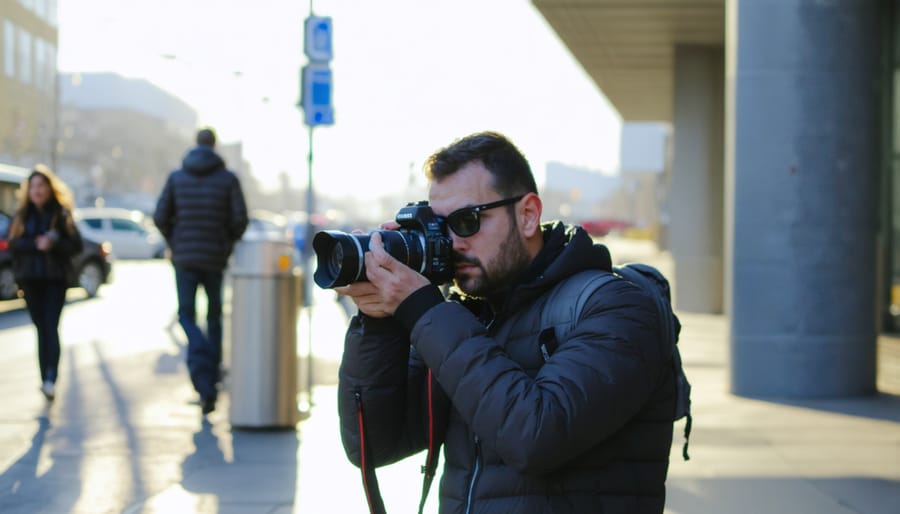
Model Releases and Written Permission
Model releases and written permission form the cornerstone of ethical photography practice, protecting both the photographer and their subjects. While building trust with subjects is essential, formal documentation provides necessary legal protection and demonstrates professional respect.
For any commercial photography or images intended for sale or promotion, obtaining a signed model release is non-negotiable. This document grants you permission to use and publish photos featuring the subject, detailing specific approved uses and any restrictions. Even for personal or artistic work, written consent can prevent future misunderstandings and legal complications.
When photographing minors, the stakes are even higher. You must obtain written permission from a parent or legal guardian before capturing or publishing any images. This documentation should clearly outline:
– How the images will be used
– Where they might appear
– Duration of usage rights
– Any compensation arrangements
– Specific restrictions on image use
Consider creating different release forms for various situations: standard adult releases, minor releases, and property releases for private locations. Keep copies of all signed documents in both digital and physical formats for your records.
While street photography in public spaces generally doesn’t require releases, obtaining permission becomes crucial when:
– The subject is clearly identifiable
– The image will be used commercially
– The photo was taken in a private setting
– The subject is a minor
– The image could be considered sensitive or controversial
Remember that verbal consent, while better than none, doesn’t provide the same legal protection as written documentation. Make it a habit to carry blank release forms during shoots, and consider using digital release apps for convenience and secure storage.

Digital Manipulation and Truth
Where to Draw the Line
In the ever-evolving world of digital photography, understanding where to draw the line between acceptable enhancement and deceptive manipulation is crucial. While basic adjustments like exposure correction, color balance, and contrast enhancement are widely accepted, photographers must adhere to principles of truthful photography when representing reality.
Generally acceptable practices include:
– Adjusting exposure and white balance
– Cropping and straightening
– Removing sensor dust spots
– Basic color correction
– Minor retouching of temporary blemishes in portraits
However, certain manipulations can cross ethical boundaries:
– Removing or adding significant elements
– Dramatically altering body shapes in fashion photography without disclosure
– Combining multiple exposures while claiming a single shot
– Misrepresenting natural phenomena or events
– Using AI-generated elements without disclosure
The key lies in transparency and context. Commercial photography often allows more creative freedom, while photojournalism demands strict adherence to reality. When in doubt, ask yourself: “Would my audience feel deceived if they knew how this image was created?”
Best practice is to maintain detailed editing records and be upfront about significant alterations. Consider including disclaimers when heavy manipulation is part of your creative vision. Remember, ethical photography isn’t about avoiding all manipulation—it’s about maintaining integrity while respecting your audience’s trust.
Disclosure and Transparency
In today’s digital age, transparency about image manipulation has become increasingly important. As photographers, we have a responsibility to maintain trust with our viewers by being upfront about any significant edits or alterations made to our images.
When sharing your work, it’s good practice to disclose any major post-processing techniques that substantially alter the original scene. This doesn’t mean you need to list every adjustment to exposure or contrast, but significant changes like removing or adding elements, combining multiple exposures, or heavy compositing should be acknowledged.
Social media platforms are particularly relevant to this discussion. Consider using hashtags like #composite or #photomanipulation when appropriate, or including brief notes about extensive editing in your captions. For documentary or photojournalistic work, being transparent about editing is not just ethical—it’s essential for maintaining credibility.
Professional photographers should consider developing a personal policy about image manipulation disclosure. This might include standardized ways to communicate editing information to clients or consistent labeling practices for different types of edited work. For instance, you might use different categories like “minimally processed,” “artistically enhanced,” or “digital art” to clearly communicate the level of manipulation.
Remember that transparency doesn’t diminish the value of your work. Instead, it builds trust with your audience and helps educate viewers about the creative process. Many successful photographers have found that being open about their editing practices actually increases appreciation for their technical skills and artistic vision.
Cultural Sensitivity and Representation
Respect for Traditions and Customs
When photographing cultural events and ceremonies, showing respect for traditions and customs is paramount. Before attending any cultural event, take time to research and understand its significance, any photography restrictions, and appropriate behavior. Some ceremonies may prohibit photography entirely, while others might have specific rules about using flash or maintaining a certain distance.
Always seek permission from event organizers or community leaders before taking photographs. In many cases, this means making contact well in advance and explaining your intentions. Be prepared to honor any conditions they set, including limitations on how the images can be used or shared.
Pay attention to dress codes and behavioral expectations. Your attire and conduct should align with the cultural context – this might mean covering your head, removing shoes, or maintaining silence during certain parts of the ceremony. Remember that your role as a photographer doesn’t exempt you from showing proper respect.
Be mindful of sacred objects or moments that shouldn’t be photographed. Some communities consider certain rituals or items too sacred for documentation. When in doubt, ask before shooting. Also, consider the impact of your presence – moving quietly, keeping a respectful distance, and avoiding disruption of the ceremony should be priorities.
If possible, share your photographs with the community afterward. This gesture of reciprocity helps build trust and ensures your work benefits those you’ve photographed. It also provides an opportunity for feedback and corrections if needed.
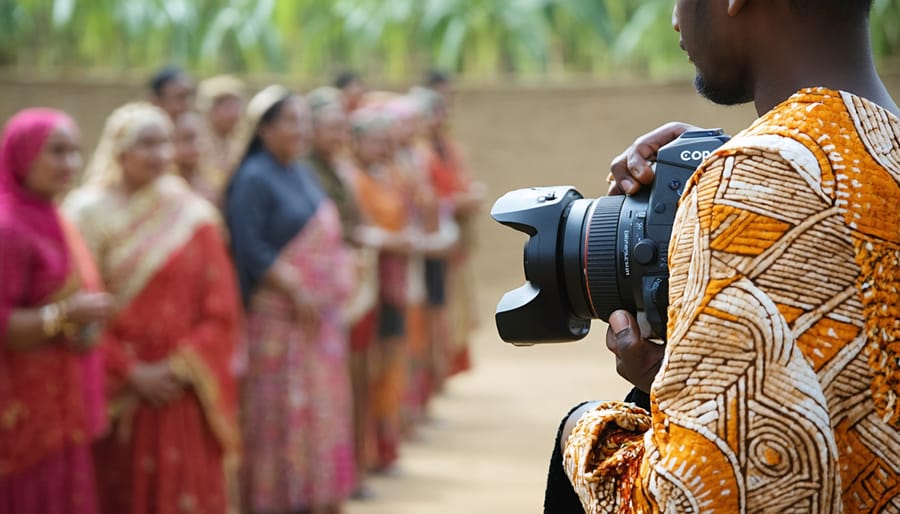
Avoiding Exploitation
When documenting communities through photography, it’s crucial to approach the work with cultural sensitivity and awareness. Start by researching and understanding the community you’re photographing, including their customs, values, and potential vulnerabilities. This background knowledge helps avoid perpetuating harmful stereotypes or creating misleading narratives.
Engage with your subjects as equal participants rather than passive objects. Seek permission, explain your intentions, and involve them in the storytelling process. Consider how your images might impact the community both immediately and in the long term. Ask yourself: Does this photo reinforce negative stereotypes? Am I showing a complete and balanced perspective?
Context matters significantly. When capturing challenging situations like poverty or hardship, ensure your photographs tell the whole story, including signs of resilience and dignity. Avoid sensationalizing difficult circumstances or focusing solely on negative aspects. Instead, strive to create images that represent the complexity and humanity of your subjects.
Be transparent about your work’s intended use and share the final results with the community when possible. Consider implementing collaborative approaches, such as allowing subjects to review and provide input on which images they feel best represent them and their stories.
Remember that ethical documentation often means making difficult choices between capturing powerful images and respecting individuals’ dignity. When in doubt, prioritize the well-being and wishes of your subjects over getting the “perfect shot.”
Environmental Impact
Wildlife Photography Ethics
When photographing wildlife, the cardinal rule is simple: the well-being of the animal always comes first. Ethical wildlife photography practices require maintaining a safe distance that doesn’t disturb natural behaviors or cause stress to the subjects.
Never bait or lure animals for a shot, as this can alter their natural feeding patterns and potentially endanger both the wildlife and other photographers. Use long telephoto lenses instead of getting physically closer, and resist the urge to follow or chase animals for that “perfect shot.”
Be particularly mindful during breeding seasons and around nesting sites. Even a brief disturbance can lead to abandoned nests or vulnerable offspring. When photographing in natural habitats, stick to designated paths and avoid trampling vegetation that might serve as shelter or food sources for local wildlife.
Research your subjects before heading out. Understanding their behavior patterns helps you anticipate photo opportunities without interfering with their natural routines. Consider joining guided tours led by experienced naturalists who can help you navigate these ethical considerations while still capturing compelling images.
Remember to be transparent about your methods when sharing images. If you’ve photographed captive animals, disclose this information. This honesty helps maintain the integrity of wildlife photography and educates others about responsible practices.
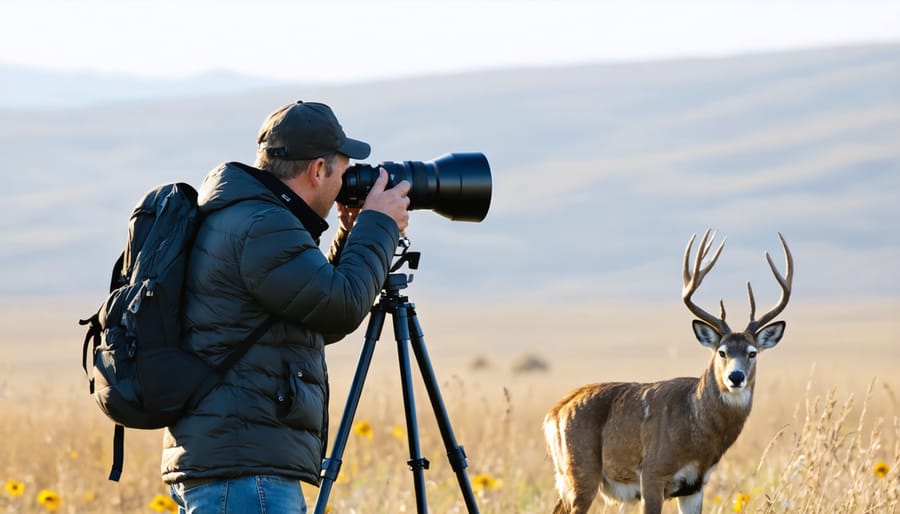
Location Preservation
The rise of social media photography has created a new ethical challenge: protecting sensitive locations from overcrowding and environmental damage. While sharing beautiful landscapes can inspire others, it can also lead to destructive overtourism. Popular photography spots have seen unprecedented visitor numbers, resulting in trampled vegetation, erosion, and disrupted wildlife habitats.
Responsible photographers now practice location preservation by being selective about sharing specific details. Instead of posting exact GPS coordinates, consider providing general area information or keeping certain locations private, especially for fragile ecosystems or sacred sites. This approach helps maintain the natural beauty while still allowing others to explore and discover locations organically.
When photographing popular locations, follow established trails and viewing areas. Avoid creating new paths or disturbing the natural environment for a unique shot. If photographing on private property or restricted areas, always obtain necessary permits and respect posted guidelines.
Consider timing your visits during off-peak hours or seasons to minimize impact. This not only helps preserve the location but often results in better photographic opportunities with fewer crowds. When sharing images on social media, use your platform to educate others about responsible photography practices and environmental stewardship.
Remember, our role as photographers extends beyond capturing beautiful images – we’re also custodians of the places we photograph. By practicing mindful location sharing, we help ensure these spaces remain pristine for future generations to enjoy and photograph.
Professional Integrity
In the world of commercial and journalistic photography, maintaining professional photography ethics isn’t just about following rules—it’s about upholding the truth and respecting your subjects. Whether you’re shooting for a magazine cover or documenting breaking news, your integrity as a photographer directly impacts public trust and the industry’s reputation.
For photojournalists, the cardinal rule is simple: never alter the fundamental truth of an image. This means avoiding excessive editing that changes the narrative, maintaining accurate captions, and being transparent about any necessary post-processing work. When covering sensitive events, such as protests or accidents, photographers must balance newsworthiness with human dignity, often making split-second decisions about what to capture and what to leave out.
Commercial photographers face different but equally important ethical challenges. When creating advertising images, there’s often pressure to enhance or modify photos to meet client expectations. While creative editing is generally acceptable in commercial work, it’s crucial to maintain transparency about digital alterations, especially when they might influence consumer decisions. For instance, if you’re photographing food for a restaurant menu, minor adjustments to lighting and color are standard, but completely replacing ingredients or making unrealistic modifications crosses an ethical line.
Both fields demand careful consideration of consent and representation. This includes obtaining proper releases, respecting privacy rights, and ensuring fair portrayal of diverse communities. When working with vulnerable populations or in sensitive situations, photographers should prioritize their subjects’ dignity and well-being over getting the “perfect shot.”
Documentation and transparency are your allies in maintaining professional integrity. Keep detailed records of your shooting conditions, editing processes, and any agreements with subjects or clients. This practice not only protects you legally but also helps build trust with your audience and clients.
Remember, your reputation as a photographer is built on the foundation of ethical decisions you make every day. By maintaining high professional standards, you contribute to the credibility and respect of the entire photography industry.
Photography is a powerful medium that comes with significant responsibilities. Throughout this guide, we’ve explored the various ethical considerations that photographers must navigate in their practice. The core principles of respect, integrity, and honesty should guide every decision we make behind the lens.
Remember that ethical photography isn’t just about following rules—it’s about cultivating a mindset that prioritizes the dignity and rights of our subjects, whether they’re people, wildlife, or cultural artifacts. This means obtaining proper consent, being truthful in our representation, and considering the potential impact of our images on individuals and communities.
As photographers, we have a unique opportunity to shape narratives and influence perspectives. This privilege requires us to act as responsible storytellers, maintaining professional standards while preserving the authenticity of our subjects and scenes. Environmental consciousness should also factor into our practice, ensuring we leave no trace and protect the locations we photograph.
The photography landscape continues to evolve with new technologies and sharing platforms, but the fundamental ethical principles remain constant. By committing to these principles—respecting privacy, maintaining transparency in our editing practices, protecting vulnerable subjects, and considering cultural sensitivities—we contribute to a more responsible and sustainable photography community.
Let these ethical guidelines serve not as restrictions but as empowering frameworks that enhance our creative practice while protecting the interests of all stakeholders involved. The future of photography depends on practitioners who understand and embrace these ethical responsibilities.

